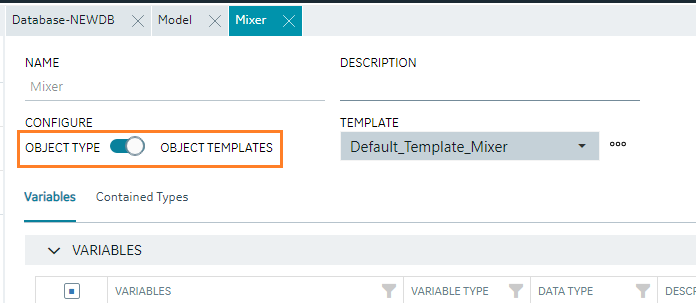Template Overview
Templates describe how Object Instances will be created from an Object Type. All Types are created with a default template and require at least one template to work. Creating multiple templates is useful if you have a number of Asset definitions that are similar and have majority of overlapping variables, but have some exceptions.
Toggling between Types and Template Configuration
When editing an Object Type, there are two modes in the configuration panel. By default you open a type in "Object Type" mode. In this mode you can add variables and modify their Variable and Data type. It is also in this mode that you configure any Contained Type child aliases.
Variables and Contained Types configured at the type level are propagated to all of the Type's configured templates. In order to configure the properties of Type Variables and Contained Types, you will need to switch into "Object Template" mode.

You can specify the Tag block type of a direct variable only in Object Template mode and only before creating instances of that type and publishing the Model. After published and Instances exist for the type/template, the Tag Block type of your variables cannot be changed.
Default Template
A type must always contain at least one Template. By default when you create a Type a default template is created for you. If you do not need to account for slight variations in the Object Instances that will be created from your type, you do not need to configure anything further with the template.